Pope Francis


Pope Francis has a knack for setting traditionalist teeth on edge with unscripted musings on sacred topics. He recently did it again when he seemed to suggest that a Lutheran could receive Communion in the Catholic Church after consulting her conscience.
The exchange came up during a prayer service Nov. 15 at a Lutheran church in Rome that had invited the pontiff. And he used the occasion to engage in a question-and-answer session with some of the congregants.
One woman, Anke de Bernardinis, told Francis that she was married to a Catholic and that she and her husband share many “joys and sorrows” in life, but not Communion at church.
“What can we do on this point to finally attain Communion?” she asked.

An Italian nun who shot to global fame by winning The Voice of Italy talent show is set to star in a stage production of the musical Sister Act, which opens here in time for Christmas.
Cristina Scuccia, better known as “Suor Cristina” (“Sister Cristina”), wowed judges and audiences last year with her soulful renditions of pop classics by artists such as Alicia Keys. Appearing on stage in her habit, silver cross swinging as she swayed, Scuccia became the unlikely winner of the Italian version of The Voice and signed a record deal with Universal.
The 27-year-old is now set to take the next step in her career. The stage production of the 1992 movie, in which Whoopi Goldberg played a singer hiding out in a convent after witnessing a murder, will open on Dec. 10 at Rome’s Brancaccio Theater.

The nation’s Catholic bishops on Nov. 17 passed an updated guide for Catholic voters ahead of next year’s elections, but only after airing unusually sharp disagreements on how much they can, and should, adjust their priorities to match those of Pope Francis.
More than any other item on the agenda of the bishops’ annual meeting here, the debate over the lengthy voter guide, called “Faithful Citizenship,” revealed deep divides among the bishops and provided a snapshot of the extent of the “Francis effect” on the U.S. hierarchy.
In the most impassioned objection to the voter guide, San Diego Bishop Robert McElroy took the floor to argue that the document — which was a reworking of an 84-page treatise first written in 2007 — should be scrapped because it did not reflect the way that Francis has elevated the battle against poverty and for the environment as central concerns for the Catholic Church since his election in 2013.
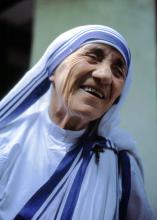
The Vatican has announced that Pope Francis will canonize Mother Teresa in September 2016, according to Gerard O’Connell with America magazine.
Known for her zealous commitment to serving the poor, Teresa of Calcutta’s beatification process was one of the shortest in modern history, and was completed on Oct. 19, 2003, by Pope John Paul II — just six years after she died in 1997.

"The people who are fleeing Syria are the most harmed by terrorism, they are the most vulnerable as a consequence of civil war and strife. They are parents, they are children, they are orphans. And it is very important — and I was glad to see that this was affirmed again and again by the G20 — that we do not close our hearts to these victims of such violence and somehow start equating the issue of refugees with the issue of terrorism.
"When Pope Francis came to visit the United States, and gave a speech before Congress, he didn’t just speak about Christians who were being persecuted. He didn’t call on Catholic parishes just to admit to those who were of the same religious faith. He said, protect people who are vulnerable."
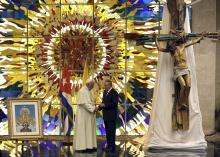
Pope Francis has decided to donate a crucifix given to him by Cuba’s president, Raul Castro, to a parish at the forefront of the European refugee crisis.
Francis will give the crucifix to parishioners on Italy’s southernmost island of Lampedusa, where thousands of refugees and migrants have arrived in recent months.
Standing more than 9 feet tall, the crucifix is made of wooden oars, as a symbol of migration. Crafted by the Cuban artist Kcho, it was given to Francis by Castro during the pontiff’s official visit to Cuba in September.

Pope Francis on Nov. 11 urged Catholics to continue the tradition of a family meal, leaving smartphones aside, and switching off the TV to enjoy the “fundamental experience” of sharing food.
“The sharing of a meal — and therefore, other than of food, also of affections, of stories, of events — is a fundamental experience,” Francis said during his weekly audience in St. Peter’s Square.
Sitting around the table helps measure the health of relationships, the pontiff said: “If in a family there’s something that doesn’t work, or a hidden wound, at the table it’s understood immediately.”
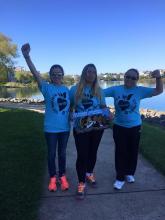
“In cities and towns across the country, women will walk for one mile on the 11th of each month for 11 months. Together we’ll walk another 100 miles for the 11 million undocumented immigrants in the United States.”

Pope Francis made a whirlwind trip to Tuscany on Nov. 10, during which he addressed immigrant workers, called on Italian bishops to shun power, and celebrated Mass with thousands of followers in Florence’s soccer stadium.
Francis started his packed, daylong schedule with a helicopter flight to Prato, known for its textile industry and large Chinese community. Crowds waving the Vatican’s yellow and white flag met him on his arrival.
The pope called for an end to labor exploitation, addressing the deaths of seven Chinese workers in a nighttime factory fire in 2013.
“It is a tragedy of exploitation and of inhumane conditions of life. And this is not undignified work,” he said.

Pope Francis on Nov. 8 broke his silence over the leaking of confidential Vatican documents, which he described as a “deplorable act” that will not stand in the way of his ambitious reform agenda.
Speaking to followers in St. Peter’s Square, the pontiff criticized revelations made in two books published last week that explore Francis’ efforts to overhaul financial mismanagement within the Vatican walls.
“Stealing those documents was a crime. It’s a deplorable act that does not help,” the pope said, adding that the leaked information was based on a study he had personally requested.

FOR IMMEDIATE RELEASE
Contact: Michael Mershon, Director of Advocacy and Communications
Email: mmershon@sojo.net
Phone: 202-745-4654

A Honduran cardinal who is a top adviser to Pope Francis said he expects the pontiff to travel to Mexico’s border with the U.S. when he visits that country in February.
“I think it’s almost sure he will go to the border. I don’t know which cities,” said Cardinal Oscar Rodriguez Maradiaga, who heads a special council of nine cardinals that Francis set up in 2013 to advise him on reforming the Vatican.
“Knowing him, he will go … I don’t know yet where,” Rodriguez said in an interview on Nov. 3 before taking part in a Fordham University panel on “Laudato Si’,” the pope’s groundbreaking encyclical on the moral duty to protect the environment.
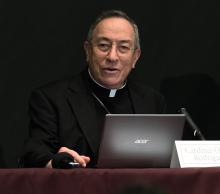
Despite intense opposition from some conservatives and new revelations of financial scandals in the Vatican, Pope Francis is at peace with the reformist course he has set for the Catholic Church, according to a cardinal who is a leading adviser to the pontiff.
Honduran Cardinal Oscar Rodriguez Maradiaga also said that the latest reports of excessive spending and political maneuvering by officials of the Roman Curia only confirm the need to press ahead with an overhaul of the papal bureaucracy.
“You know, everybody that is trying to make good will have opposition,” Rodriguez said Nov. 3 after a conference at Fordham University on Francis’ environmental agenda.
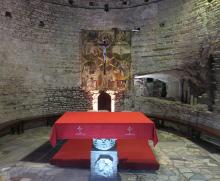
The document would become known as the Pact of the Catacombs, and the signers hoped it would mark a turning point in church history.
Instead, the Pact of the Catacombs disappeared, for all intents and purposes.
It is barely mentioned in the extensive histories of Vatican II, and while copies of the text are in circulation, no one knows what happened to the original document. In addition, the exact number and names of the original signers is in dispute, though it is believed that only one still survives: Luigi Bettazzi, nearly 92 years old now, bishop emeritus of the Italian diocese of Ivrea.

Pope Francis’ visit to the Kenyan capital of Nairobi Nov. 25–27 will bring healing and reconciliation to the East African nation that has suffered key setbacks in the recent past, senior bishops here say.
Kenya, a country with 14 million Catholics, recently announced the theme of the papal visit: “Stand firm and be strong.” Organizers expect nearly 1.5 million people to attend the papal Mass on Nov. 26 in Nairobi; there are nearly 4 million Catholics in the Archdiocese of Nairobi.
The pope’s Nov. 25-30 pilgrimage to Africa, also includes travel to Uganda and the Central African Republic. But in remarks Sunday to a crowd of faithful in St. Peter’s Square, Francis raised the possibility that security risks could cause the Central African Republic leg of his trip to change or even be scrapped.

AS A FORMER Baptist child who often mocked Catholic school children for their outfits—which paled against my own fashionable ensemble of striped pants, checked shirt, and flannel hat (with flaps!)—I admit that as an adult I have warmed to the “one, holy, catholic, and apostolic church.” (Did I get that right?) Catholics have better steeples, usually with bells, and cool smoke during worship, and interesting stained glass windows to look at if the homilist lacks conviction, which he often does, compared to the preachers of my youth. They would sweat right through their white suits as they paced back and forth describing the Coming Judgment which—and they were very clear on this point—will not be pretty.
We didn’t have much to do with the Catholics in our small Indiana town, except to occasionally remark on their odd rituals, their odd prayers (sometimes to a woman!), and their great fish fries, which Baptists could attend, under cover. We also noticed the lack of American flags on their altars. How was that Christian?
But as I grew older and experimented with different church traditions, I became more open to Catholicism and frequently visited on Sundays, under cover.

Oct. 31 is approaching quickly — a day marked throughout the United States by costume contests, pumpkin carvings, and children knocking on neighbors’ doors with questions of “trick or treat?”
But for Protestant churches around the world, Oct. 31 is also a celebration of a grown man knocking on a (rather large) door, asking a different question of the Catholic Church:
From whom does salvation truly come? And a follow-up: How do we refocus the church on the Gospel?
On this date, almost 500 years ago, Martin Luther hammered his 95 Theses onto the front doors of All Saints’ Church in Wittenberg, Germany — an act that, unforeseen by Luther at the time, is now credited with beginning the Protestant Reformation. Luther’s 95 Theses outlined his abstentions to the practice of selling indulgences to guarantee Christians salvation, emphasizing that grace is given by God alone and can only be assured by the clergy, not bought from them.
With the help of the social media of his day — the newly-improved printing press — news quickly spread to people throughout Europe that Martin Luther was questioning the papacy and attempting to refocus the church’s theology on forgiveness through the word and the eucharist, neither of which required financial prosperity. Within a few years, Martin Luther was excommunicated from the Catholic Church for his continued teachings, which included suggestions that the Bible should be accessible to all people and that priests not necessarily need to be celibate.
The Reformation gathered Christians from across Europe into a community of “rebels,” from which multiple denominations would spring up over the next half a century.
Today, 498 years later — with of a Catholic pope nicknamed “The Peoples’ Pope,” who is on Twitter and preaches about income inequality — what would Luther think of the state of the church?
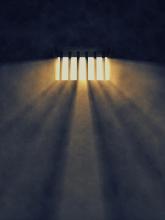
POPE FRANCIS called our country to honor the sacredness of all human life. He called on Congress to embrace a consistent ethic of life—to abolish the death penalty. The state killed no one while Francis walked among us. But three days after his departure, blood flowed.
Six people in five states were scheduled to be executed in the U.S. within one week of each other in the beginning of October:
Wednesday, Sept. 30. Kelly Gissendaner, convicted for the orchestration of the 1997 murder of her husband, converted to Christianity while on death row in Georgia. Gissendaner, a respected student of theology, was put to death after three failed Supreme Court appeals.
Wednesday, Sept. 30. Richard Glossip, who is widely believed to be innocent of the 1997 murder-for-hire for which he was convicted, was scheduled to be executed in Oklahoma, but Gov. Mary Fallin issued a stay of execution. Fallin offered the stay not because she believed that Glossip was innocent, but rather because of questions over whether the state possessed the legal drug protocol to put him to death.
Thursday, Oct. 1. Alfredo Prieto was executed in Virginia for the rape and murder of a woman and her boyfriend in 1988. Prieto was believed to be a serial murderer with an IQ below 70, according to Amnesty International. Prieto had an appeal pending when the state killed him.
Friday, Oct. 2. Kimber Edwards was convicted of the murder-for-hire of his ex-wife in 2000, but another man recently confessed to having acted alone. Edwards, who has autism, originally confessed to the crime, but at his trial and ever since he has said he was innocent. His death sentence was commuted to life in prison by Missouri Gov. Jay Nixon.

THE MONTH of December brings with it the season of Advent and Christmas. It’s always been my favorite time of the year, because it shows us powerfully and practically how our Christian faith entered the world. The incarnation is unique among world religions. The way I like to say it: In Christ, God hits the streets. Christmas gives Christians the annual opportunity to remember the incarnation of God’s love breaking into the world—how it did and how it still can.
Advent is about waiting, and Christmas brings the newborn who announces a new order meant to turn the world upside down—and our lives with it. Christmas always renews my commitment to bring that revolutionary love into a world that so desperately needs it, and into my own life again.
In the bustle of our daily lives, with all of the distractions and struggles that come our way—even in Christian ministries—it is so easy for us to lose sight of the transforming love embodied in the person of Christ. So it’s vitally important that we have this season to remember and re-encounter and re-center ourselves on the heart of our faith: God breaking into history to transform it, and us, in the person of Jesus.
Christmas always reminds me that being a Christian means being a follower of Jesus, willing to allow that message of the reign of God, a new order of things, to break in again and again.
While that statement about following Jesus may seem obvious, how many of us really focus, on a daily basis, on living our lives as Jesus did? On saying what he said, doing what he did, behaving as he behaved? On treating people in the way Jesus treated people?

“The frame of reference is now going to be: ‘What does the gospel really say here?’ That’s our first task.”
That’s Washington Cardinal Donald Wuerl summing up the new course for Catholicism set by the momentous Vatican meeting of 270 bishops from around the world that concluded last weekend, a three-week marathon in which he played a key role.
After often contentious talks on whether to adapt the church’s approach to issues such as divorce and cohabitation, the high-level synod succeeded in giving Pope Francis a document that offers him significant new flexibility in shaping more pastoral policies.